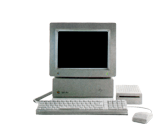The Japanese Connection
I've always loved playing Thexder, Silpheed and especially, Ancient Land of Ys on the Apple IIGS. But with equal enjoyment came equal fascination: where exactly did these games originate in Japan? Research to answer this question lead me on a wonderful retro computing journey of discovery that, quite to my surprise, came full circle and ended up back to the Apple II again.
Being a child of the 80s, Thexder was a no brainer given the transforming robots craze of the day. Silpheed was one of the few rare computer games with its intense bullet dodging and weapon power ups to rival arcade button mashing originals but surpass them with many more music compositions than normally included in an arcade game soundtrack. Ys' new style of real-time action role-playing combined with memorable and emotive music makes this triumvirate responsible for many hours of enjoyment.
Fascination stemmed from Sierra and Kyodai's marketing, respectively, reassuring us that these imported titles from Game Arts and Falcom were major hits for the Japanese personal computer market. Evidently then, in the 80s the Japanese weren't using the same computers as western countries like the Apple II, Commodore 64, Amiga, Atari ST and IBM compatibles otherwise we'd have already been playing these games alongside our Japanese brethren in 1985, the original release date of Thexder. Nowhere on the game boxes or manuals did it reveal what platform these games originally came from.
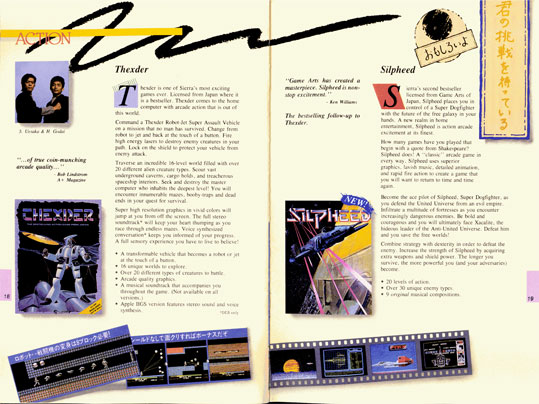
You always want what you can't have and my interest in these games only heightened more when Sierra weened itself from the IIGS in 1989, but continued to convert Japanese games for MS-DOS. Sorcerian was announced in Sierra's Autumn 1989 newsletter: I dearly would have loved to have played that during those timeless, carefree days back in high school after thoroughly relishing Falcom's other major RPG franchise, ‘Ys'. Further envy followed with Sierra's next Game Arts import Thexder 2: Codename Firehawk. And only recently did I discover a hidden gem: Zeliard. It was the last Game Arts title Sierra translated, an action platformer with some mild RPG elements added for good measure. Upon discovering it I started something I thought I'd never do, just to try playing it: emulate MS-DOS. It was a cold day in hell that day I can assure you. Playing these games was good, but I was still intrigued about where they originally came from, or more specifically, what computers were they initially designed for in their own exotic market? How is it that when Ken Williams, president of Sierra, went to Japan on a trip to secure selling more of his titles to the Japanese market, that he ended up licensing Japanese games for western audiences? The answer is not only the creative talent that went into making these games, but also the unique hardware for which the games were developed.
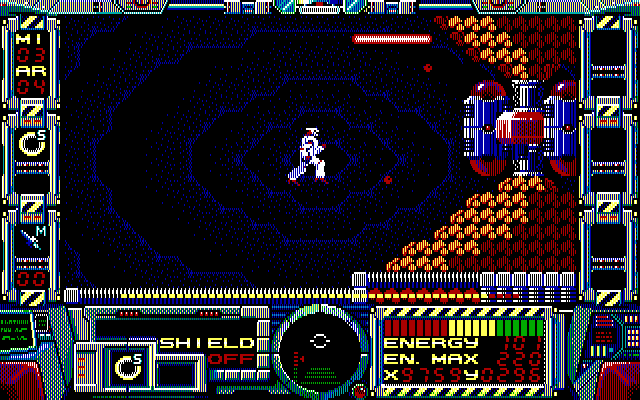
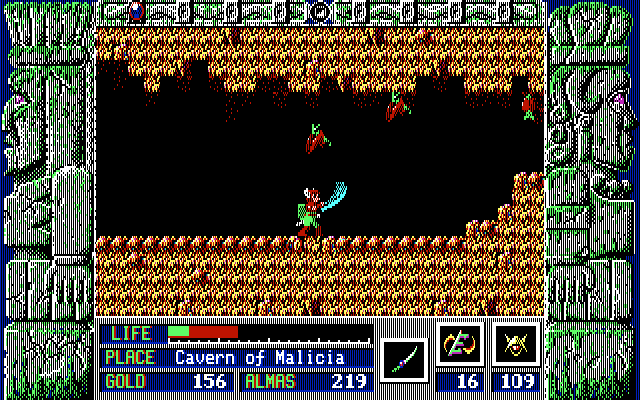
Japan developed its own personal computers out of necessity; early personal computers such as the Apple II, although much respected in Japan, had difficulty accommodating the many characters within the Hiragana and Katakana ‘alphabets', not to mention the many hundreds more in Kanji. Not content with the language hacks applied to western computers, Japan started to develop their own systems to better accommodate the Japanese language and their own market, with personal computers being a way to increase productivity during the financial boom of the 80s.
NEC was one of the first companies to release a Japanese personal computer, the PC-8001 in 1979 and dominated the industry throughout the 80s. New hardware releases saw the PC-6001 and the PC-8801 series in 1981 and in 1985, the PC-8801 Mk II SR, the platform upon which Thexder was born and is said to have had the most impact on the hardware's sales success; quite impressive and not to mention ironic, given that these computers were never specifically designed to be games machines. At last! I had found the answer at the heart of my curiousity! Competitors to NEC for the Japanese market were Sharp, Fujitsu and the many hardware manufacturers supporting the MSX standard, which all sported similar specs.
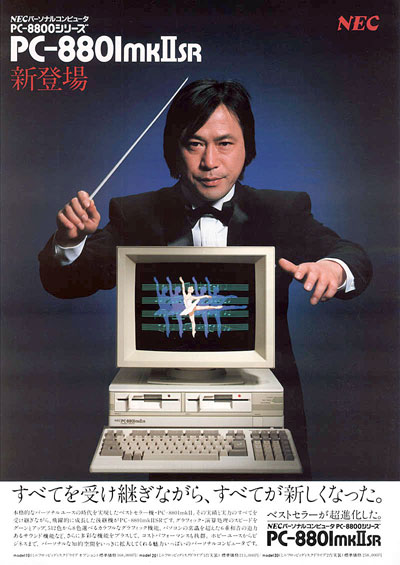
Something I'd always found interesting was that both Thexder and Silpheed on the IIGS used the 640 x 200 super hi-resolution graphics mode: unusual as it greatly limited the number of colours in the palette, which you usually want to maximise for visual impact. It turns out that the PC88 (for short) predominately uses a graphics resolution of 640 x 200, just like most IIGS applications that follow Apple's Human Interface Guidelines and the desktop metaphor. Unlike the IIGS however, 8 colours can be displayed from a palette of 512 colours, where the IIGS can really only display 4 true colours or 16 dithered colours (with black and white being ‘true' and red, blue, green and yellow requiring to be dithered), although the palette can be chosen from 4096 colours.
Luckily however, the graphics of Thexder were designed for 4 colours (once the multi-coloured explosions were removed) and translated perfectly to the IIGS (but, like Devo, I like explosions too). Silpheed's graphics had to compromise a little more on the IIGS in regards to colour, but this perhaps resulted in a more sensible and less gaudy colour palette than the PC88 original. But again, the IIGS version lacks something of the original: the rolling planetary graphics seen during battles in orbit.
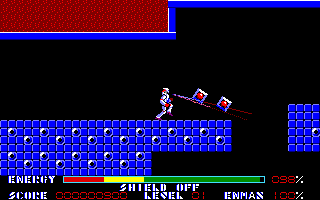
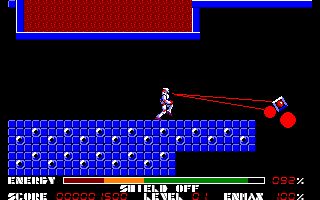
Graphics resolutions are just the start of more similarities to the IIGS. The PC-8801 Mk II SR and the models that came after it also shared an amazing sound and music capability, which quite possibly mobilised Ken Williams to strongly support sound cards for IBM compatibles in the late 80s, which in turn probably helped solidify the MS-DOS computer as the ideal machine for home use for most people in the 90s, along with VGA graphics and the sheer weight of safety in numbers... OK, so that's one point that doesn't work in the PC-88's favour!
Keep in mind that the PC-8801 series are 8-bit computers as well, the Mk II SR model sporting nothing more than a 4Mhz Z80 processor. Like a stock standard IIGS, this makes them relatively underpowered beasts, but clever programming saw through these limitations. Many PC88 games scroll by blocks/tiles rather than pixel by pixel. This may not have allowed for smooth 60 frames per second scrolling, but the PC88 instead created a different kind of ‘rhythm' for scrolling action games. Some IIGS games could have benefited from this technique, but any future IIGS games will soon be able to rely on the GTE engine for smooth scrolling (another blog for another time!).
Thinking beyond techniques that could have been used on the IIGS and dreaming, as I like to do, many games for the PC-8801 Mk II SR would have made terrific IIGS ports. Of course, translating from Japanese to English can be a costly and time consuming effort and companies like Sierra no doubt hedged their bets on the bigger market of MS-DOS to make their more comfortable returns.
There are many Japanese websites showcasing the games of the platforms of NEC, Fujitsu and Sharp, but none better than the ‘Retro PC Game Music Streaming Radio' site. Primarily intended to be the online radio station for Japanese retro gamers, the site also includes many screen shots, recorded intro and completion movies as well as box scans. Keep an eye out for the extended ending to Silpheed or the entire intro scene cut from the MS-DOS version of Thexder 2. Take enough time to check out titles you've never heard of, like Snatcher, a cyberpunk adventure from Metal Gear Solid creator Kojima Hideo, or the plethora of RPG titles. In these examples the narrative plays out beautifully by combining story telling techniques of manga, anime and cinema. Attention to detail is evident, not only in creating a sense of style but by making the most of the limited graphics hardware, RAM (64k) and disk space (340k 5.25" floppies).
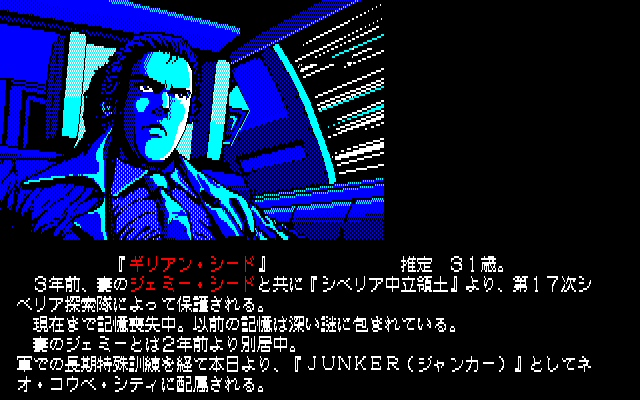
Coming back to the similarities between the PC88 and the IIGS, every Apple II and PC-8801 series computer share a Microsoft derived version of BASIC in its ROM that's accessible as soon the machine starts up. But there's one last surprising revelation...
Going even further back, before the release of the PC-8801 MK II SR I discovered something particularly interesting. Many classic 8-bit Apple II games had been converted to the PC88, like those from Sierra (Time Zone, Sammy Lightfoot, Mystery House, the Wizard & the Princess) Broderbund (Midnight Magic, Lode Runner, Choplifter, Karateka), Origin (Ultima Series), Sir-Tech (Wizardry Series) and SSI (Phantasie Series) amongst many others.
It's these last RPG themed titles that are of particular importance - these are the games that inspired the works of Falcom and in turn, produced their works of Ys and Sorcerian. Also, one time small gaming companies Square and Enix, now Japanese gaming juggernaut Square-Enix, cut their teeth on the PC88 and were also influenced by the likes of Ultima and Wizardry. So if your kids or anyone else too young to appreciate the Apple II are engrossed in the latest Final Fantasy, just quietly let them know that Japanese RPGs owe a debt of thanks to the Apple II. Respect from those whippersnappers will surely follow and the circle of the Japanese connection with the Apple II will be complete.
